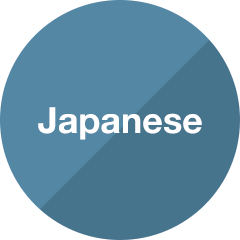2017/7/11 at Colorkrew office
Natch! Open Management Opens up the Future.
- Part 1 "Holacracy Management and Super Flat Management"
- Part 2 "Straight Talk: Payroll and Performance Review"
- Part 3 "The Future We Are Aiming For"
-
Kozo Takei
Diamond Media President Chairman and Co-founder
Study abroad in the USA, CD debut, entrepreneurship, bankruptcy, M&A, re-start-up, and more; his experiences are as dynamically unique as his approach to business.
Put into pratice a Holacracy style of management before the word was even invented, has been at the forefront of Holacracy management as both instructor and organization support. -
Keiji Nakamura
CEO/Managing Director of Colorkrew
After entering Toyota Tsusho Corporation, transferred to affiliated company in Germany as president.
Became CEO at ISAO Corp. (current Colorkrew Inc.) in October 2010. Turned struggling business around and saved company. While gradually changing the way the organization was run, a so-called “Super Flat” model was implemented in 2015 which promoted a flat management style free of any hierarchy or job titles. Believing that Colorkrew should be a “visionary company that brings joy to work around the world,” he leads the company as a member of Team Colorkrew.
Holacracy Management Diamond Media and Hybrid Management Colorkrew
Different service sectors, different sizes. What they do have in common is a shared belief in not adhering to the traditional hiearachy structure of management. Their nearly identical management style promotes a flat organization where everyone contributes to the best of their abilities.
Through this interview series we will find out what path of thinking led both managers to this point and the differences between the two management styles.
A conversation with the Pioneers of Holacracy Management. 21st century management style.
Part 1「Holacracy Management and Super Flat Management」

First off, introduce your organizations to each other.
- Keiji
-
Thank you for taking the time to meet today.
First, I was hoping we could introduce both of our organizations, then discuss the differences between the typical past structures of organizations, Holacracy organizations, and Super Flat organizations so that we may both learn a little. -
Colorkrew has been a behind the scenes player in the IT industry, providing systems and management in the B2B sector. Creating services with clients, creating our own services, doing a wide variety of jobs across the entire IT industry.
It originally started as a joint venture between CSK and SEGA; from 2010 it has been a part of Toyota Tsusho Corporation.
Sales are approximately 37 billion yen; operating income is approximately 4.5 billion yen. Total employee count including part-time workers is around 250.
- Kozo
-
Diamond Media's main business is extremely niche. Real Estate Financial technology and Real Estate Distribution B2B2B.
Our customers include real estate brokerage and management companies, real estate investors, and independent owners.
We founded the company in 2007 and started business from 2008. Specialization in real estate started from about five years ago. We have 16-17 employees, about 10 freelancers, and employees are free to do side-work.
Sales are in the 2 billion yen range. We've stayed profitable with no outside funding. Right now we are in the phase of investing back into the company; we have purposely limited operating profits to around 100 million yen. If we wanted to, we could reach profits of about 500 million.
- Keiji
- So, exactly what type of services are you providing for the real estate industry?
- Kozo
-
It's actually a bit difficult to explain.
Our main business is a web marketing service aimed at real estate brokerage companies. Four staff manage this, and it accounts for about 70 percent of our sales. -
The rest of the members are handling new business ventures, one of those being a leasing management system aimed at real estate management companies.
We are the only company in Japan that provides this specialized service. We are offering a service that hasn't been covered by existing businesses. Separating the work that a real estate management company does into management and acquisition. -
To put it simply, it is a service specialized for real estate management by combining marketing automation and SFA (Sales Force Automation).
Making clear what is sales and what is marketing, the service allows real estate companies to be able to analyze their acquisition work properly.
The second new service is why we call ourselves a real estate financial tech. Real estate is different from cash and other types of financial assets, it's a real asset, which makes buying and selling on the net difficult.
Same as used cars: if you don’t actually see the real thing, you can’t actually judge the condition it is in.
This lack of real assets means there is no market to buy and sell like stocks. Transactions are typically negotiated through a broker.
In a variety of industries, the middle man and margins are being eliminated by the IT revolution. Due to the reasons I've mentioned, it simply isn't that easy in the real estate industry. We hope to optimize the distribution system, including the role of the middle man. - We gather together the information that the middle man has, such as operating rates, etc., If an investor connects to an accounting app provided by one of our partners, they can then manage real estate on the same screen as they manage other financial assets.
- Keiji
-
I think I've got it. (laughs)
How can you make information open in an industry where information is typically incredibly closed, is the crux of your business.
- Kozo
-
Exactly! If information becomes open, the market naturally becomes more sound.
This open idea is similar to the Diamond Media Management style.
- Keiji
-
Alright! Good job leading us to our next topic: style of management. (laughs)
It is about time to discuss organization structure.

Removing wasteful authority through Holocracy management.
- Keiji
- Diamond Media is trying to implement a radical open Holacracy Management. First, could you please explain that management style in simple terms?
- Kozo
-
We originally went with the term "Humanistic management," which was coined by Shiro Tenge (Toshitada Doi's pen name), to describe the management style, we even wrote about it on a blog. Sadly, that term never caught on, so lately we have jumped on the bandwagon and started calling it "Holacracy Management."
When we changed the blog's title to "Holacracy Management," traffic increased ten-fold. (laughs)
The actual contents of our management is exactly the same as Colorkrew. However, our size is smaller so it's a bit easier for us to really jump in with both feet.
Lately we've started to introduce that way of thinking to our capital policy as well.
- Keiji
- What type of initiative is that?
- Kozo
-
I believe that the thinking behind Holacracy is to get rid of pointless authority. Once we saw the results of removing authority from inside the organization, we started to remove authority from the shareholders also.
Right now I control the majority of the shares, the founding two members and the executive officers each hold shares. I'm considering moving to a new type of scheme. It irks me when people think they have control over the company just because they have shares in the company. (laughs)
- Keiji
- What type of new scheme?
- Kozo
- Currently, we are still investigating the possibilities, we are thinking of trying to create a holding company. The shares for the holding company posses voting rights, the rest of the shares have no voting rights. By putting this into action, even if I'm no longer around, management will be in in a situation where it is able to continue.
- Keiji
- I see. Shares will continue to be held.
- Kozo
- Yes, shares will be owned, but have no voting rights. The authority over management vanishes. We've already got a plan for this, and I think within this year or the next it will be implemented.

Misgivings with hierarchical style
- Keiji
-
Generally, I'm also keen to eliminate meaningless authority, posts, superior/subordinate relationships, etc. However, I'm often asked what is the point of doing something different from the normal hierarchical structure.
How do you rationalize doing something different than the norm?
- Kozo
- Yeah, what is the point? (laughs) For us, it's because that's the only way to do it!
- Keiji
- In many cases it feels like something just isn't right with hierarchical style.
- Kozo
- Exactly. My company has been doing this management style for 9 years. I've never worked at a normal organization, so I'm not sure, but this way has got to be better, doesn't it?
- Keiji
- You've never worked at a hierarchical style organization?
- Kozo
- The extent of my experience is doing part time jobs quite a while back. Taking orders from a person who can't do work as well as you, just because they are in higher position is really irritating. (laughs) A title is not what should be important. The person who is able to do a job, does it. That's the way it should be.
- Keiji
-
Makes sense. I always feel that there is a large amount of waste in the organizational structure of hierarchical style.
There is a hierarchy, so you have to waste time getting approvals and reviews, there are announcements of announcements, it is all a complete impairment to productivity.
My first years as a worker were spent in a hierarchical style organization. When I looked around, I could see the real talents in the company driving their work forward, not caring about the hierarchy. But to get to the next step in their work, they had to go to their superior to receive a signature.
- Kozo
- A shining example of big corporate behavior. (laughs)
- Keiji
-
I was in Europe before I become president of Colorkrew. In Western companies, decision making is dramatically quicker. I tried to observe why and found it was because the organizations are flat, they don't request useless reports from those working on the floor.Once again, confirming just how important decision making speed is. I saw before my eyes that Japanese businesses are going to lose to these companies.
I thought about what must be done to speed up decision making. - "Raising decision making speed to win at business" and " getting rid of inefficient work in the organization, making work fun" these two points sum up the way of thinking behind how Colorkrew is being managed.
"What is the point of work?" The question on my mind since bankruptcy.
- Kozo
-
I started up one business before Diamond Media, but it soon went under.
Four of us started the company together, all as executive officers. We struggled for the dream, lived a desolate life-style to the point that we were in debt. We ended up not getting anything for our struggles though (laughs). At the time, I thought alot about things like "what is the purpose of a company?” and "what is the purpose of a job?” I was not sure if there was any meaning in going so far as to borrow money from my friends.
I started to really consider "What's the point of a company?" "What is the point of doing work?"
- Keiji
- When you say "with meaning," is it in the context of "a business that has meaning" or "a team or place that has meaning?"
- Kozo
-
Both.
There are various stakeholders for a company: stockholders, employees, partners, clients, the local community, the company itself. The balance of how you contribute to each one is important. To create a company that is good for all people involved, I wanted to realize this not solely by the kind spirit of management but by putting into place a structure that is reproducible.
Since the founding of Diamond Media, we've tried a variety of initiatives. Salary is determined by everyone. Superiors and subordinates do not exist, etc.
There was a time we tried actually listening to the advice that loose accounting is best for companies, we almost went under. (laughs)

We can laugh about it now (the turbulent dark history of Colorkrew)
- Kozo
- Okay, on the other hand, could you tell me why Colorkrew transitioned to a Super Flat management style?
- Keiji
- The key to a Super Flat management style is being flat and open. Let me first discuss an example of being open.
-
When I came to Colorkrew in 2010, everything was hierarchical; there was a president, executive officers, division directors, department directors, group directors, etc. There was only 80 full time employees, yet 22 corporate officers.
What I started with was this: a large amount of work was just related to managing people, not for making profits. The business was not doing well. Six out of seven of the divisions were in the red, just one in the black. The company was losing 6.2 billion yen a year.
- Kozo
- That's an extremely tough situation.
- Keiji
-
Yes, yes it was.(laughs)
HR was extremely closed off, the elites in the company would place people based on their feelings.
I was an outsider, I didn't know any of the internal details, no one actively tried to give me any information.
I tried to gather up information, taking stock of personnel and salary, that alone led to an unthinkably horrible situation.
Delving into how things got to be as they were was pointless, so I started meeting with the actual people doing the work in the company to try and figure out what was the appropriate salary for the appropriate person. After long discussions, we came up with 10 ranks and put every employee into those ranks. How much each person would actually receive wasn't considered at all. We had a problem though, if we implemented this plan there would be staff whose yearly income would suddenly decrease by 300 million, so we implemented a 2-year adjustment allowance. We then temporarily revealed that new salary plan inside the company.
- Kozo
- How was the reaction?
- Keiji
-
People kicked up a storm. (laughs)
We decided to delay revealing everything inside the company until things had settled down a little bit. It took about 2-3 years until everything became completely open. I could really feel the amount of power and energy that it takes to change an old style organization to a new style. One where information is open.
- Kozo
- Very interesting. (laughs) I love that.
- Keiji
-
Next, regarding flat, we moved from six different levels of Hierarchy in 2010 to three levels in 2014.
The timing when we become a "Super Flat" organization was when some of our genius staff returned from outside assignments. We had to decide what would be the correct position for them to return to.
Making new executive positions so that we could bring people back was utter nonsense. What did we do? ...... We got rid of all executive positions. (laughs). There were various proposals on what to call this: Amoeba Management, Project Style management. Finally, after taking submissions from within the company we settled on "Super Flat."
- Kozo
- There wasn't any opposition? People didn't quit because of this?
- Keiji
-
Not when we decided on calling it Super Flat. There were quite a few people who quit as the changes went into effect starting from 2010.
Authority is born from information and who controls the finances. By making information open and the organization flat, we could usurp power and abandon it. Of course, some people didn't think too highly of this.
We completely prohibited self-settlement of entertainment expenses, then some people came up with the strangest excuses to quit like "I don't agree with your way of thinking.” (laughs)
- Kozo
- That doesn't sound like a disagreement with a way of thinking, does it? (laughs)
- < PREV
- NEXT >
RECRUIT
Regardless of whether you are a new or recent graduate or even an experienced professional, Colorkrew is focused on recruiting talented members all year long.
If you’re passionate about creating services that make the world more fun and also looking to improve your skills, then you should apply with us.
